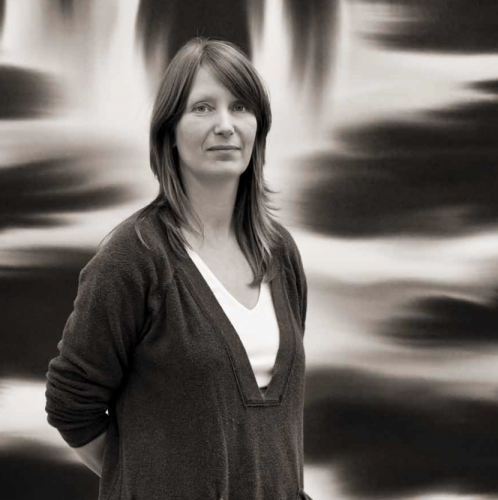Luce Meunier
During the 1970s, the use of chance as a creative process in the visual arts developed. John Cage, for example, used it extensively in his graphic production, and he declared: “Modern art does not need techniques (we are in the glory of not knowing what we are doing.)”. Luce Meunier
For the Québécoise artist Luce Meunier, chance has an essential value. Associated with various artistic trends of the 20th century such as surrealism, it allows Luce Meunier to detach the work from her artistic hand. By creating various pictorial devices, she enables the freedom of the random “pictorial gesture”.
It is indeed she who chooses the colours and tools to be used, but the final product is completely free of the artist’s constraints: the form is free and the colour follows its own path. This process reminds us of one of the ideas defended by the Support/Surface group in the sixties: “The object of painting is the painting itself and the paintings exhibited relate only to themselves. Indeed, the painting is not a reflection of the artist’s imagination, of his or her intimate world, but rather of the work of the paint for its own sake and the pleasure of the medium.
The spontaneity of the final work should not, however, overshadow the importance of the prior pictorial work by Luce Meunier. If the canvas is the result of chance, this is relatively controlled by the artist’s desire to obtain a certain final result, which would correspond to sufficient tension to be presented. This requires several attempts before arriving to the final image. The opposition between preparatory work and a spontaneous result induces an ambivalence between the part of anticipation and the part that remains unpredictable.
This was in the same manner that the German abstract painter Hans Hartung utilized during the 60s to carefully prepare each of his seemingly abstract and spontaneous canvases with numerous sketches, René de Solier said about his work: “The painter becomes a technician, and supervises, governs his enterprise no longer blindly. He is no longer “possessed” by painting”.
For Luce Meunier, this interplay with abstraction allows her to question what can be considered today as an “image”. By showing the result of a process and an idea, she places her art in the line of conceptual works that Joseph Kosuth defined as follows: “the idea of art and art are the same thing”.
The Canadian artist proposes a real pictorial experience through a game of manipulation using minimal means. The coloured material freely inhibits the space in a poem of movements that make the passing of time visible.
For her series Eaux de Surface, Luce Meunier uses traditional techniques and tools in an unconventional way. She places sponges soaked in paint on canvas and gives free rein to the movement of colours. Through a play of displacements and coloured flows, the canvas absorbs the colour which seems to converge towards a point of unification.
This random process makes the materiality of the canvas visible by leaving certain spaces blank, concretising the creative process employed. The movement of colour leads to a paradox: despite the random and unique nature of the process of making each work, the repetition of forms and visual echoes which are finally obtained pushes the viewer to rethink the dimension of chance contained in each element released from the hand of its creator.
Inès Molière
